This financial crisis is a predictable cyclical downturn. How do we know where we are in it? The secret is all in land prices, says Phil Anderson
Hardly anyone seems to know what is going on just now, let alone is able to explain it. Most believe the recent banking crisis was a random, unpredictable event. But far from it: the drama unfolding is just history repeating- only the numbers get bigger. By studying the past, we can get a good idea of how the economy is going to unfold each year. And the most informative history to study is that of the US property market. Let me explain why.
Property cycle: lessons from history
The US federal government began selling off its newly-acquired real estate on 10 May 1800, a convenient starting point. It can be seen that property speculation in the US has consistently peaked around every 18 years, right up to the Second World War. Studying this in more detail, one sees an astounding repeat of economic and banking behaviour (see How the cycle has worked in the past, below). This 18-year property cycle is now going worldwide as more nations take up the US brand of economics.
MoneyWeek
Subscribe to MoneyWeek today and get your first six magazine issues absolutely FREE

Sign up to Money Morning
Don't miss the latest investment and personal finances news, market analysis, plus money-saving tips with our free twice-daily newsletter
Don't miss the latest investment and personal finances news, market analysis, plus money-saving tips with our free twice-daily newsletter
The process is underpinned by the enclosure of the economic rent, a concept first formalised by English economist David Ricardo. Ricardo's 'Law of Rent' states, simply, that the economic rent is not a cost of production. What do I mean by this? A house costs pretty much the same to build, wherever you build it- wages are the same, and materials costs are the same. But the selling price will depend on the location. So builders, for example, will bid more for the best locations. That money doesn't go to the workers building the house, and nor is it spent on improving the materials used. It purely benefits the owner of the land. This bid is what Ricardo was first to identify as a "surplus": the economic rent. Property investors know it today as locational value.
Wherever a price is put on this locational value of land, a property cycle will develop as speculators and companies chase land prices higher and higher, reducing the proportion of wealth being invested in creating jobs and investing in productive businesses. This cycle is beyond the control of central banks. The enormous credit created by banks based upon this value now gives us the violence of the property boom, then bust. This cycle has manifested clearly in 14 years of rising prices, then four years declining. From the 1955 land-price low in most Western 'rent-enclosed' economies (i.e. where land is privately owned), the 18-year cycle has been exact: 1955 to 1973/4; to 1991/2; and now to what will most assuredly be another property low in 2010.
There are a number of easy signposts investors can look for as the cycle progresses through its 18-year run. Here are a few that warn of an impending cyclical peak. Tall buildings are a classic signal. Since 1837, there has never been a property peak without at least one building claiming the new "world's tallest" title; often two or more are competing. Such buildings have in the past always opened to great fanfare, but in tough economic times. The Burj under way in the Middle East will not be an exception.
The price of copper is another tell-tale sign that the property cycle is about to peak. Since 1873, there has never been a property peak without the price of copper exploding into the final years of the 18-year property cycle. Copper is used extensively in manufacturing, of course, and in the building of housing. The yield curve also informs observant investors that a land price downturn is coming. An inversion of the curve is what to watch for. Higher interest rates equal lower asset prices and a contraction in credit.
The best indicator, though, is something most economists have no interest in studying: land prices. As mentioned before- and contrary to popular belief- it is not house prices that go up, but the locational value upon which they are built. This value is the capitalised land rent, expressed as a price. Unfortunately, neither the US nor the UK bothers to collect this information in any precise form- but Australia does. And Australian economic cycles have a high correlation with US cycles.
Dividing a nation's land price by its GDP can help investors see where money is flowing, either into the goods and services sector, or speculative assets such as land price (see chart 1).

A strong rise in the barometer is a clear warning sign of too much land speculation taking place. A recession always follows this behaviour. It is not the recession that does all the damage to an economy. The damage arises from the precursor: an unsustainable rise in land price. Investors who learn to see things this way find it easy not to overbid for the locational value at precisely the wrong time.
What history also teaches us is that the greatest speculation always takes place in the last years of the cycle. Fred Harrison neatly summarised this pattern with his "winner's curse" profile of the 18-year property cycle (see chart 2).
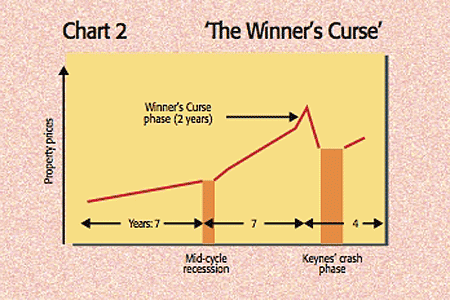
My research confirms the US has had a remarkable consistency with Harrison's profile. US real estate, expressed in real estate investment trusts (Reits), underwent a mini-panic in 1962, seven years from the 1955 land price low, after the Second World War. Values peaked in 1969, followed by an exact four-year decline after that. From the 1973/74 property low, seven years up saw the mid-cycle slowdown of 1981; then seven further years of economic growth capped by massive real-estate speculation into 1988; then a recession low by 1992. From this property low of 1992/3, seven years on saw the 2001 mid-cycle slump- and you know the story from there. Property buyers within the winner's curse phase always end up with negative equity for years afterwards. And investors most highly leveraged in this phase do not survive the downturn.
In 2005, I created the 24-hour real-estate clock to help guide my own investments. Historically, the property cycle has seen a very clear 14 years of rising prices, followed by four years of decline. While this doesn't tell us how high the eventual boom may go, we can say that the higher land prices are permitted to rise, the greater the eventual bust will be. There is no reason why this pattern will not continue, since the underlying structure of the economy will likely remain the same. Banks will continue creating the necessary credit to enable us to buy into rising land prices as they find new ways to avoid the rules and regulations expressly designed to stop the banking routs of earlier collapses.
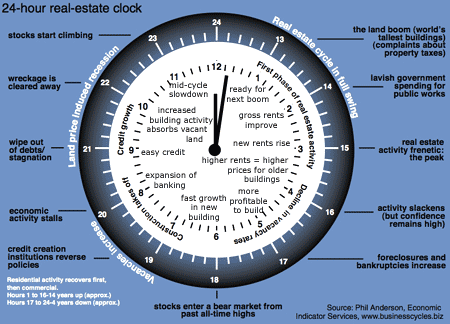
Property cycle: so what happens next?Investors can now expect four years of declining property prices, minimum. In the UK, this can be measured from the last quarter of 2007- so prices will not stop falling until the end of 2011 at least. Certainly, at the end of every past 18-year cycle, prices have never recovered in a shorter time-frame than this. The depth of the present banking problems ensure this cycle will see at least the same time-frame. How far will property prices decline? History says 30% (minimum) can be expected from the peak, 50% or more for raw land. This will put even greater pressure on UK builders as the cycle turns further - in the 1991 downturn, some commercial property prices in Texas dropped by 90%.
Our banking problems are nothing new. It is amazing to witness how quickly investors forget the previous banking panics at the end of the property cycle, as land prices begin to deflate. In October 1973, the collapse of the US National Bank of San Diego was the biggest in 40 years. The bank collapsed because of the activities of its major shareholder, C Arnholt Smith, chief fundraiser for Richard Nixon and a major real-estate speculator in southern California.
An even bigger failure, that of the Franklin National Bank of New York, followed in October 1974, despite a rescue package from the Fed worth an unprecedented (at the time) $1.7bn. Property loans also featured. Fed chairman Arthur Burns, asked by a Newsday reporter what stopped the world financial system from imploding after the failure of Franklin bank, replied: "Luck, more than anything. We were sitting on a volcano. People were concerned in this country, but they were really scared abroad. We can't let it happen again, because we might not be so lucky the next time."
Yet we never seem to learn. The current US and UK property cycles will repeat in line with the 24-hour real-estate clock. The UK is presently at 20:00 on the clock, the US at 21:00. Bad debts will have to be either paid off or wiped out (as Ben Bernanke and Hank Paulson at the Treasury are trying to get Congress to do, and Gordon Brown and Alistair Darling over here), and the wreckage cleared away, before the economy can move on. This process takes years, not months.
What will be the sign that the market is turning? Drawing upon past behaviour, the US has led the world both into and out of each property cycle. US land prices peaked in 2006, the UK a year later. So if we know what is happening in the US, we can see what is coming for the UK.
The US should hit its cyclical property low at some point in 2010. The best indicator that we are approaching that point will be the stockmarket (see 23:00 on the 24-hour real-estate clock image). Over past property cycles, US stockmarkets have always made what might be called a generational low another reason why it is so useful to view history in 18-year segments. Stockmarket lows at the end of a property cycle are lows that are long remembered in markets. Attitudes change for a few years when they happen. For some investors, they become life-defining moments. Usually by the time of the property low, the stockmarket will have surrendered 50% of the gains made in the 14 or so previous "up" years. From 1992 to 2007, the Dow Jones rose from around 3,000 to more than 13,000. A 50% fall would put the Dow back to around 8,000 by the end of 2009, if not before. Given the size of the current banking problems and banks' total inability to continue to create more credit until they have properly recapitalised, this is not at all an unreasonable forecast.
US stockmarkets have done this for as far back as there is data available. Both 1877 and 1896 saw major stockmarket lows (see chart 3), at the time of each respective property cycle downturn.
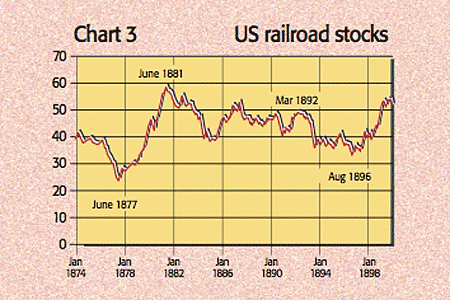
They are caused by the massive, unavoidable contraction in credit that affects every single individual and business. Cash will once again be king in 2009; a resource few will have in abundance. Yet the stockmarket always turns up before the property market does. In 1991, as more and more grim news came out about the US property market and bank collapses- and it was indeed grim- the US stockmarket held its ground (see chart 4).
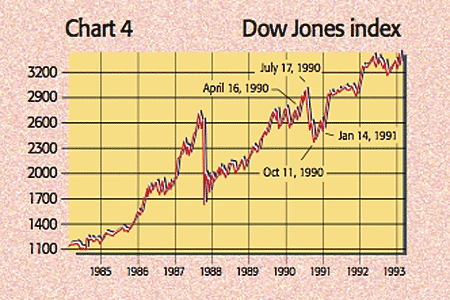
And as 1991 progressed, the market saw higher lows. By 1995, as the US stockmarket broke into all-time new highs, the property downturn was history.
This will again eventually repeat for the US, but not before well into 2009 or even 2010. Until then, it is completely pointless investing in property since one would be buying into a declining market. And the best property gains come only as the property cycle gets fully under way, something which is most unlikely until several years after 2010. This does not require guesswork. The US stockmarket will lead the way.
How the property cycle has worked in the past
In 1820, the US saw a marked downturn in economic activity. It began with a downturn in land prices after the bursting of the cotton price bubble in January 1819: a price upon which banks had been creating vast amounts of credit. Most of the US banks of the time failed as land prices collapsed.
Into the 1830s, a revival in business led to a fresh bout of land speculation, funded on liberal credit terms by the government. That ended when President Andrew Jackson's Specie Circular of 11 July 1836 decreed that, henceforth, payment for federal lands could be in silver or gold only. The circular coincided with the failure of several banks in London- substantial land speculation had been taking place using the easy credit provided by the growing number of banks in the new US territories.
In New York, John Fleming, President of Merchants Bank, fell dead from anxiety over the affairs of the bank 4 May 1837; shortly after a run set in on all banks. The failures grew worse over the next two days, and United States Bank stock fell below its issue price for the first time. On 9 May there was a "furious run on all the banks"; by 10 May, panic.
After the severe downturn of 1837 to 1842, politicians decided that such a depression should never be allowed to happen again. Banks would only be allowed to create credit based upon a high level of gold and silver reserves, to be held at all times in their vaults. Then, in 1849, gold was discovered in California, leading to the largest migration of people the world had ever seen. Flush with gold, the banks started lending again to eager gold and land speculators. The failure of the Ohio Life Insurance and Trust Company of New York (a bank) on 24 August 1857, caught markets by surprise. Thirty days later, the Bank of Pennsylvania, in Philadelphia, shut its doors. Newspapers reported "the wildest excitement", as queues formed at every bank in the city, demanding their money back, only to find it wasn't there. There was a nationwide banking panic in October, followed by a severe downturn that lasted until the start of the Civil War in 1861.
Many would suggest the 1873 US downturn, panic and depression, was caused by the collapse of the railroads. But these companies were nothing more than enterprises formed to secure the give-away, at very low prices, of what the railways ran over- the land. On 18 September 1873, the news that Jay Cooke and Company, a New York bank heavily involved in financing these newly developing railroads via bond issues, had failed, stunned investors. Disbelief soon gave way to panic, as the stockmarket collapsed and daily interest rates rose to 5% as the banks began to hoard their (now scarce) cash resources. There had been substantial land speculation before all these events, especially through the listed railroad companies. This speculation peaked several years before the bank failures, in 1869.
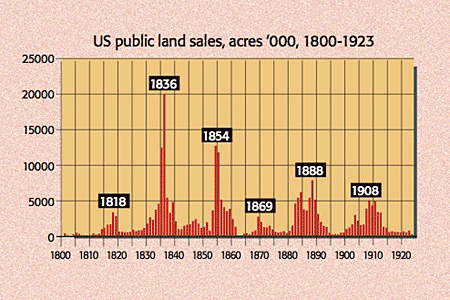
The 1893 US depression was preceded by rampant buying and selling of real estate and land, not just in the US, but globally. Again, the economic turn was marked by a banking bust, this time in the UK. In November 1890, Barings Bank, the Queen's own banker, collapsed. Two weeks before, the Bank of England had lifted its discount rate from 5% to 6%. These events are not unrelated. Credit difficulties were obvious in the US by February 1893, when the Philadelphia and Reading Railroad company collapsed after struggling to meet its interest payments. The 1893 worldwide crash was so severe that few individuals caught up in the subsequent depression ever speculated again. While the US did see renewed selling of the government lands into 1908, the First World War cut short any likely after effects.
The events leading up to the 1929 stockmarket crash are well known. But the idea that the stockmarket collapse ignited the 1930s depression is wrong; neither was the trouble down to the inaction of the Fed allowing the money supply to collapse. On the contrary, it was a direct result of the continued collapse of real-estate (i.e. land) prices, to a level below the outstanding worth of all the mortgages the entire US banking system had created. Sound familiar? The real-estate speculation peaked in 1926, exactly 18 years after the previous peak in 1908. Throughout the 1930s, the lower house prices and farm land went, the more banks collapsed.
Phil Anderson is director and founder of economic forecasting service www.businesscycles.biz. His book, The Secret Life of Real Estate, is published this month in the UK by Shepheard Walwyn.
Get the latest financial news, insights and expert analysis from our award-winning MoneyWeek team, to help you understand what really matters when it comes to your finances.
MoneyWeek is written by a team of experienced and award-winning journalists, plus expert columnists. As well as daily digital news and features, MoneyWeek also publishes a weekly magazine, covering investing and personal finance. From share tips, pensions, gold to practical investment tips - we provide a round-up to help you make money and keep it.
-
 Boost for over 100,000 families on Child Benefit as new HMRC payment system rolled out
Boost for over 100,000 families on Child Benefit as new HMRC payment system rolled outThousands of households will no longer have to pay the dreaded High Income Child Benefit Charge through self-assessment
-
 Are you being haunted by the ghost of Christmas past? How festive cutbacks could boost your long-term wealth
Are you being haunted by the ghost of Christmas past? How festive cutbacks could boost your long-term wealthThe average family spends around £1,000 over the Christmas season. Here’s how much you could have gained if you had invested some of the money instead.
-
 Governments will sink in a world drowning in debt
Governments will sink in a world drowning in debtCover Story Rising interest rates and soaring inflation will leave many governments with unsustainable debts. Get set for a wave of sovereign defaults, says Jonathan Compton.
-
 Why Australia’s luck is set to run out
Why Australia’s luck is set to run outCover Story A low-quality election campaign in Australia has produced a government with no clear strategy. That’s bad news in an increasingly difficult geopolitical environment, says Philip Pilkington
-
 Why new technology is the future of the construction industry
Why new technology is the future of the construction industryCover Story The construction industry faces many challenges. New technologies from augmented reality and digitisation to exoskeletons and robotics can help solve them. Matthew Partridge reports.
-
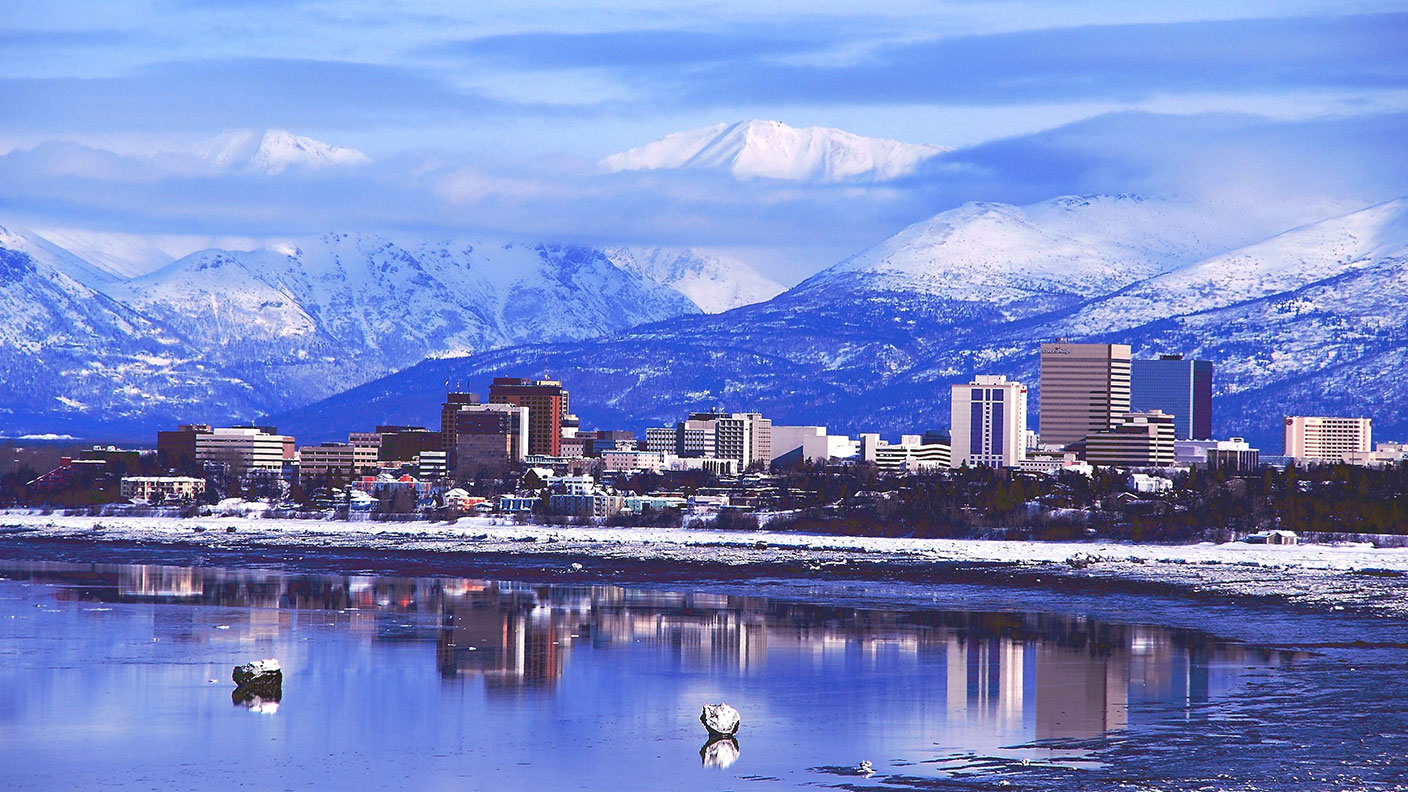 UBI which was once unthinkable is being rolled out around the world. What's going on?
UBI which was once unthinkable is being rolled out around the world. What's going on?Cover Story Universal basic income, the idea that everyone should be paid a liveable income by the state, no strings attached, was once for the birds. Now it seems it’s on the brink of being rolled out, says Stuart Watkins.
-
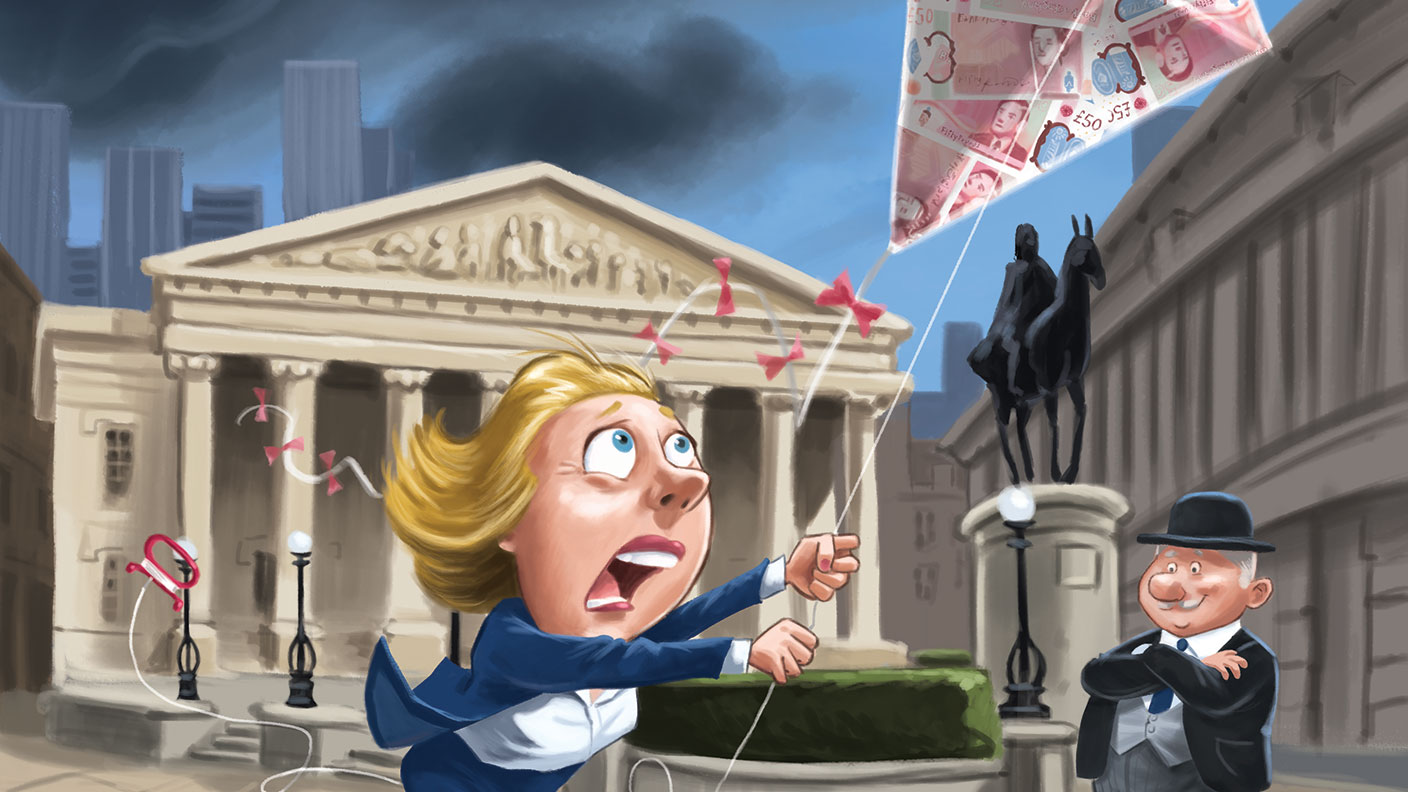 Inflation is here to stay: it’s time to protect your portfolio
Inflation is here to stay: it’s time to protect your portfolioCover Story Unlike in 2008, widespread money printing and government spending are pushing up prices. Central banks can’t raise interest rates because the world can’t afford it, says John Stepek. Here’s what happens next
-
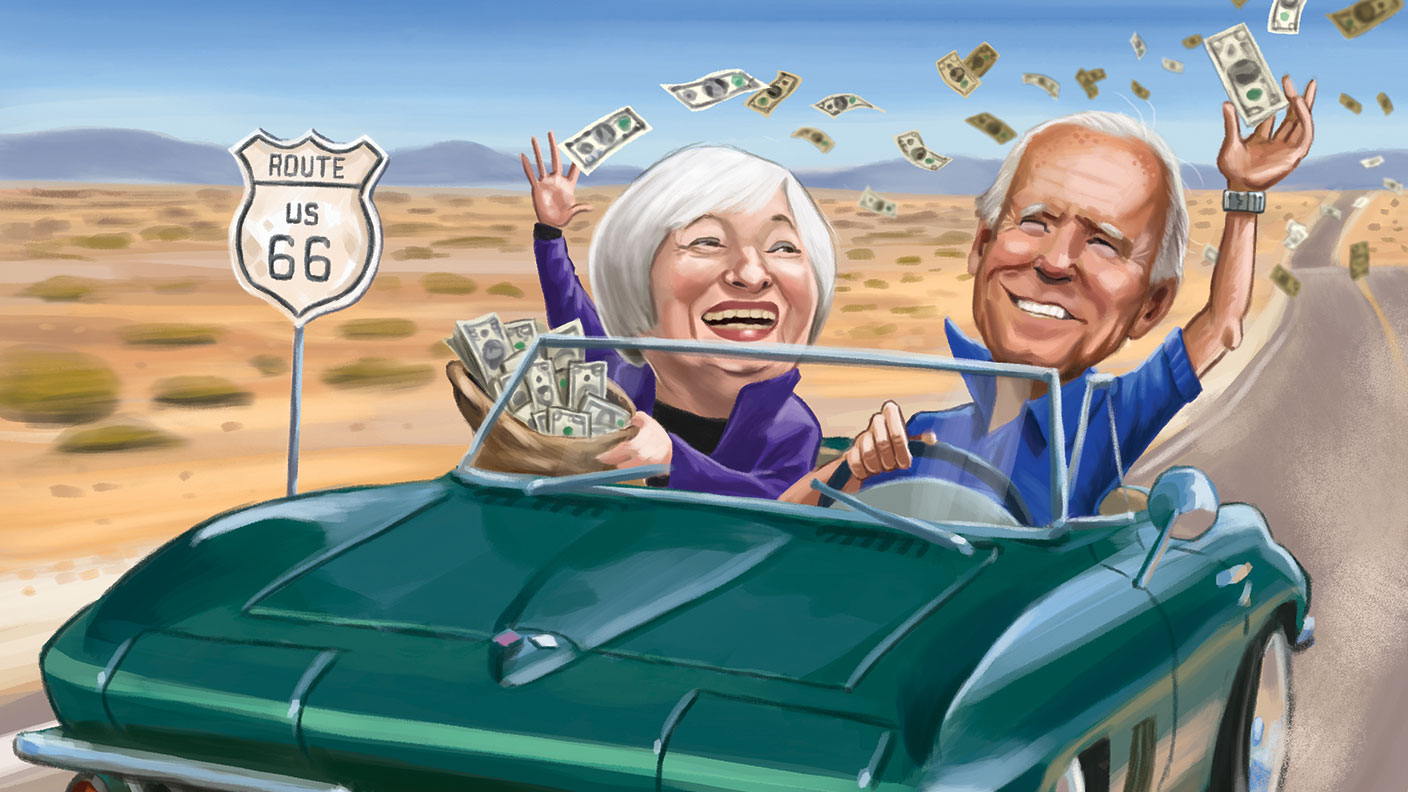 Will Biden’s stimulus package fuel global inflation – and how can you protect your wealth?
Will Biden’s stimulus package fuel global inflation – and how can you protect your wealth?Cover Story Joe Biden’s latest stimulus package threatens to fuel inflation around the globe. What should investors do?
-
 What the race for the White House means for your money
What the race for the White House means for your moneyCover Story American voters are about to decide whether Donald Trump or Joe Biden will take the oath of office on 20 January. Matthew Partridge explains how various election scenarios could affect your portfolio.
-
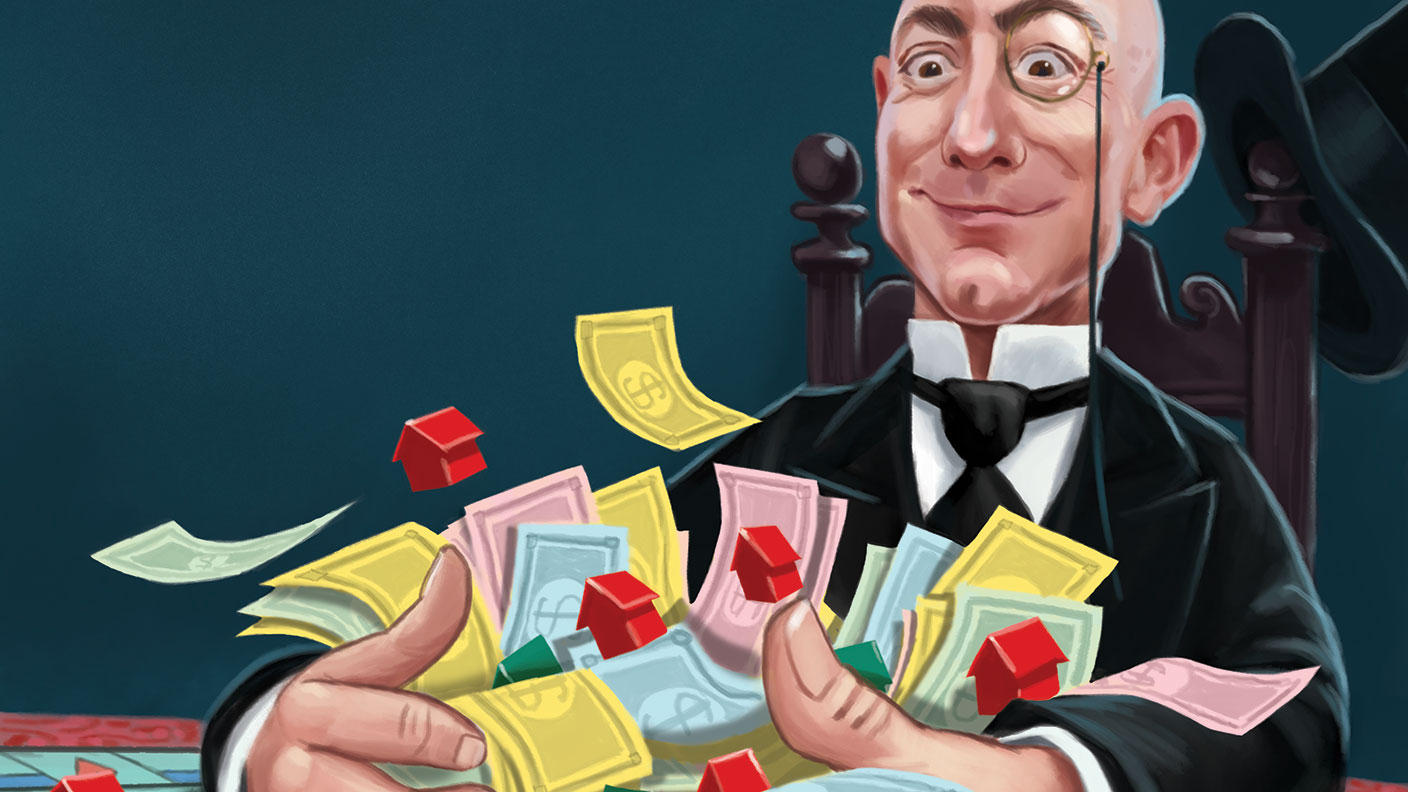 What’s worse: monopoly power or government intervention?
What’s worse: monopoly power or government intervention?Cover Story Politicians of all stripes increasingly agree with Karl Marx on one point – that monopolies are an inevitable consequence of free-market capitalism, and must be broken up. Are they right? Stuart Watkins isn’t so sure.

